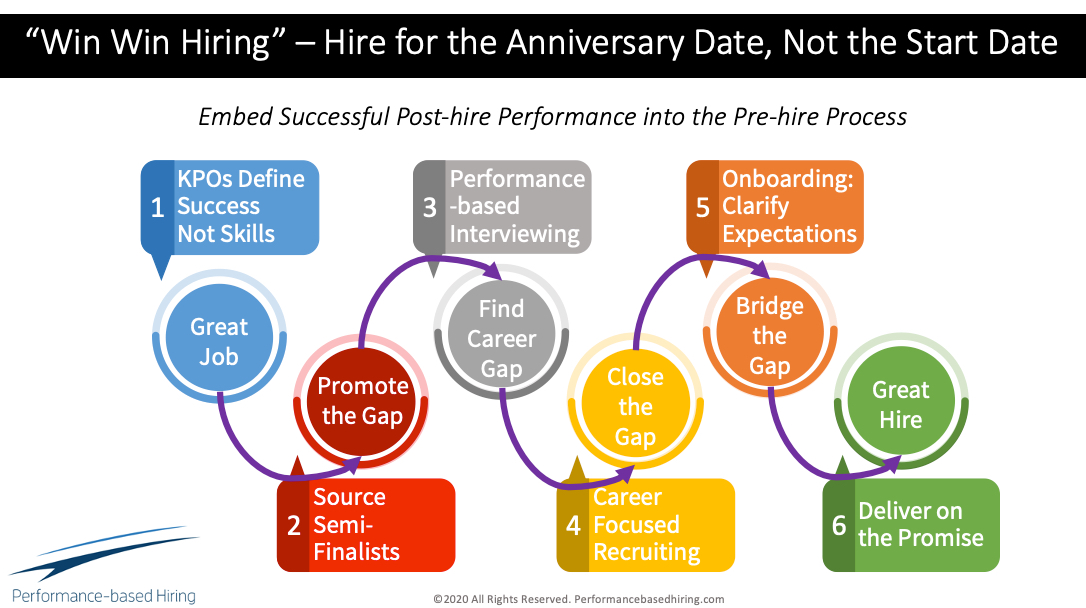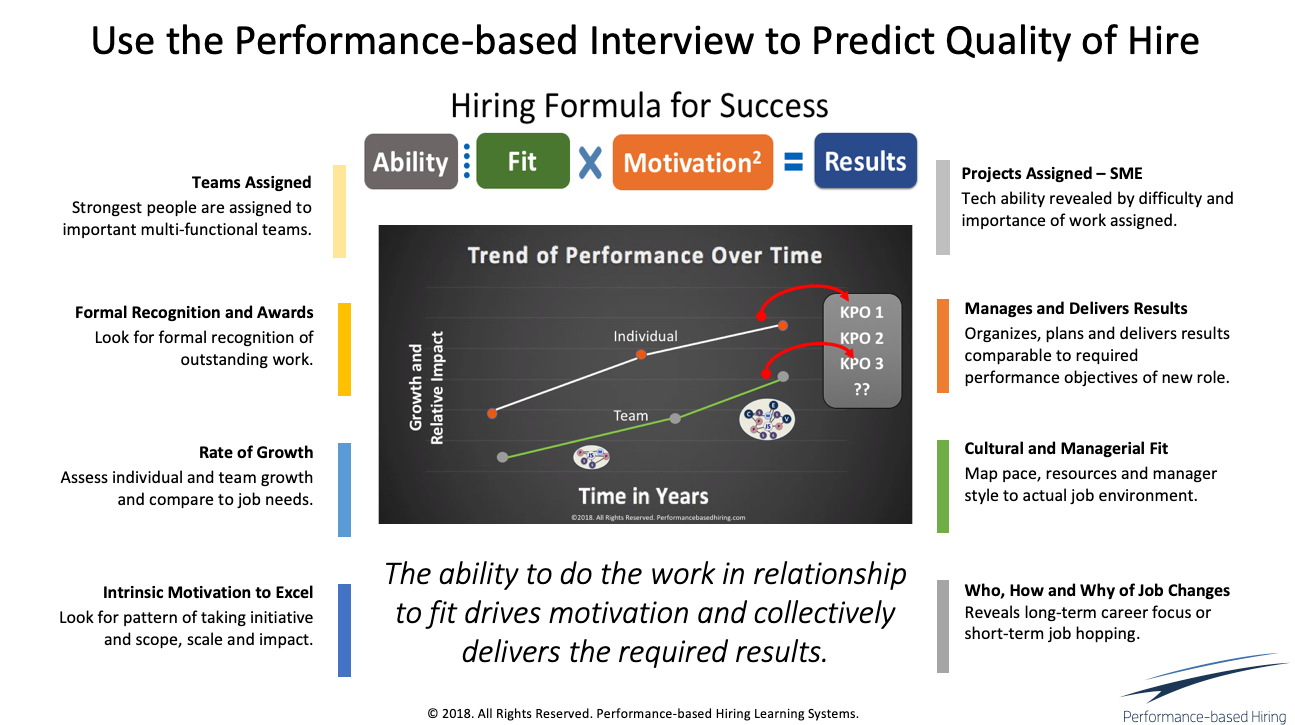
I first heard about Red Scott’s “Hire Smart or Manage Tough” credo 30+ years ago at a Vistage (then TEC) resource presentation.
The modern-day version became the Performance-based Hiring mission of Win-Win Hiring. Win-Win Hiring is based on the idea that an effective hiring process needs to consider what happens after the hire as well as before. This end-to-end process is summarized in the graphic.

From A to Z and Back Again: Eliminate Skills- and Competency-based Job Descriptions
Job expectations need to be clarified as 6-8 key performance objectives (KPOs), not a generic list of skills and competencies, when the job is first opened. One way to do this is to ask how each skill or competency is actually used on the job. For example, it’s better to say, a customer success manager must ensure his/her portfolio of clients is using the system at 90% or better effectiveness rather than the person must have 2-3 years of related experience and a positive customer service attitude.
By defining work as a series of performance objectives, hiring becomes the front-end extension of the performance management and staff development process. From a Win-Win Hiring perspective the onboarding process is the critical pre- and post-hire bridge. This is used to clarify the expectations more fully and establish the learning and development path for the new hire.
With this foundation, the sourcing, interviewing and recruiting process must assess the ability and motivation of the candidate to successfully do this type of work while in parallel ensuring the person fully understands the career merits of the role. In a recent article I made the point that by using forward-looking and process control metrics it’s possible to develop a hiring process that consistently delivers Win-Win Hiring results.
The Interview Must Be a Two-Way Street
Too often hiring managers assess candidates on factors that don’t predict performance and too often candidates accept jobs based on what they get on the start date (i.e., compensation, title, location) and not the true career merits of the role. In these cases, a win-win is unlikely. While assessing competency, fit and motivation is essential, just as essential is the need to demonstrate that the new opportunity offers a superior long-term career move.
The Hiring Formula for Success shown in the graphic can help guide this to a two-way decision-making process. From a hiring manager’s perspective the interviewing approach involves digging into the candidate’s major team and individual accomplishments over time to assess ability, fit and motivation to excel in comparison to the performance objectives of the role. From the candidate’s perspective the person will fully understand what it takes to be successful in the role on a short- and long-term basis and if this represents the best career opportunity among competing alternatives.

Eliminating Bias is Essential for Conducting an Objective Interview
While the accomplishment-based questions are effective evidence gathering tools, too often candidates with a pleasing personality and strong communication skills have an easier route to getting a job offer than those who are not as easy to understand or as overtly friendly. Hiring errors due to bias can be minimized by enforcing the following simple ideas:
- By scripting the first 30 minutes of the interview you’ll be able to control the natural tendency to judge people more on their first impression than their ability. Idea: Don’t use the interview to make the hiring decision, use it to collect the evidence needed to make the hiring decision.
- A properly conducted 20-30 minute phone call with the hiring manager and prospect will save time by only inviting semi-finalists onsite for a full interview. A semi-finalist is a person who is both fully qualified and likely to accept an offer if it represents a superior career opportunity.
- Quality of Hire Talent Scorecard, a Level 2 is someone who is competent to do the work, but not intrinsically motivated to do it. Use the second round of interviews to determine this before ever offering the person a job.
- Hiring Formula for Success. This is also a great way to coach less experienced interviewers on how to separate evidence from emotions and gut feelings.
Hire Smart or Manage Tough
This should be the mantra all hiring managers follow. Done properly it will lead to more Win-Win Hiring outcomes with a lot less effort after the hire and just a little more effort before the hire. Unfortunately, despite the evidence, too many hiring managers protest the obvious citing not enough time to hire smart. Not surprising, the reason they don’t have enough time is that no one can ever manage tough enough.

